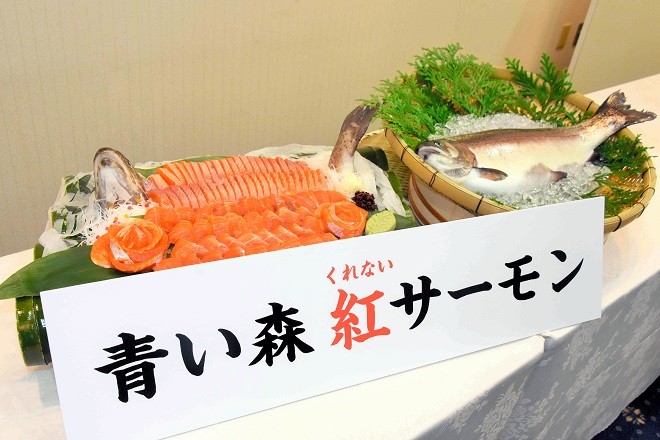Until recently, Japanese consumers had to rely on imports from Northern Europe and Chile to source salmon for their tables.
Fishermen in Aomori Prefecture, in Japan’s far north, first started shifting from catching salmon to farming the fish in 1989. Since then, as wild salmon stocks have continued to decline, the transition has only accelerated. By 2020, the wild salmon catch in some areas of northern Japan was at just 2 per cent of 1996 levels.
Now, according to the Asahi Shimbun, salmon farming is spreading so rapidly in Japan’s northern prefectures that the fierce competition between the brands is being likened to the samurai wars of the 16th century.
This reflects changing consumer preferences. In Japan, farmed salmon is more popular than tuna at conveyor belt sushi restaurants. Around 70 per cent of the 300,000 tons of salmon that reach the Japanese market annually is from fish farms.
Read more: Japanese conveyer belt sushi chains in fight for survival as prices rocket
Hiroshi Tsuruoka, head of the farming business promotion department at seafood producing giant, Nippon Suisan Group, told the Asahi Shimbun that there is still room to expand the fish’s farming further. “Demand for salmon is relatively stable and the fish has taken over the number one spot from tuna in terms of popularity at conveyor belt sushi restaurants,” Tsuruoka said.
An interesting feature of the development of Japanese salmon and trout farming is the way in which it reflects Japanese consumer priorities that favour products demonstrating strong seasonal associations and regional identities.
A leading brand, Kaikyo Salmon, from Aomori Prefecture, is available only between April and July, but processed goods based on the fish, such as vacuum-packed slices, sashimi and seasoning for the “chazuke” rice meal, are available year round.
Locally based
Unlike in Europe where farming operations are dominated by major corporations, trout and salmon cultivation in Japan is often led by local fishermen and municipalities.
Among the growing brand names are Iwate Prefecture’s Kohaku Salmon and the Aoimori Kurenai Salmon and Kaikyo Salmon brands.
Boasting reduced fat but a strong flavor and a slightly sweet taste, Aoimori Kurenai Salmon was developed in a freshwater environment by the inland water research division of the Aomori Prefectural Industrial Technology Research Center (AITC) in Towada.
The AITC has been creating “a salmon variety grown in and unique to Aomori” for around 16 years. The product has been in such high demand that Aoimori Kurenai Salmon continues to be in short supply in the market.
Yutaka Maeda, a sectional manager responsible for fish farming technology at the AITC’s inland water research division, was involved in the development of Aoimori Kurenai Salmon.
Easy to stand out
Maeda said a feature of cultivated salmon and trout in Japan is that farmers can “devise culturing methods” to make their products stand out from among other brands. “For example, the quality of fat can change at different water temperatures in farming,” Maeda explained.
AITC decided to use a rainbow trout species bred in Aomori for more than 100 years and the large-growing Donaldson rainbow trout as the mother and father of a new strain. Apples, a local speciality, were mixed in the food, which gave the fish a deeper and milder taste with a faint sweetness.
Not all these experiments are successful however. A trial feeding the fish Garlic, another local specialty of Aomori, was conducted, but this proved a bridge too far even for the most dedicated fans of localism.

